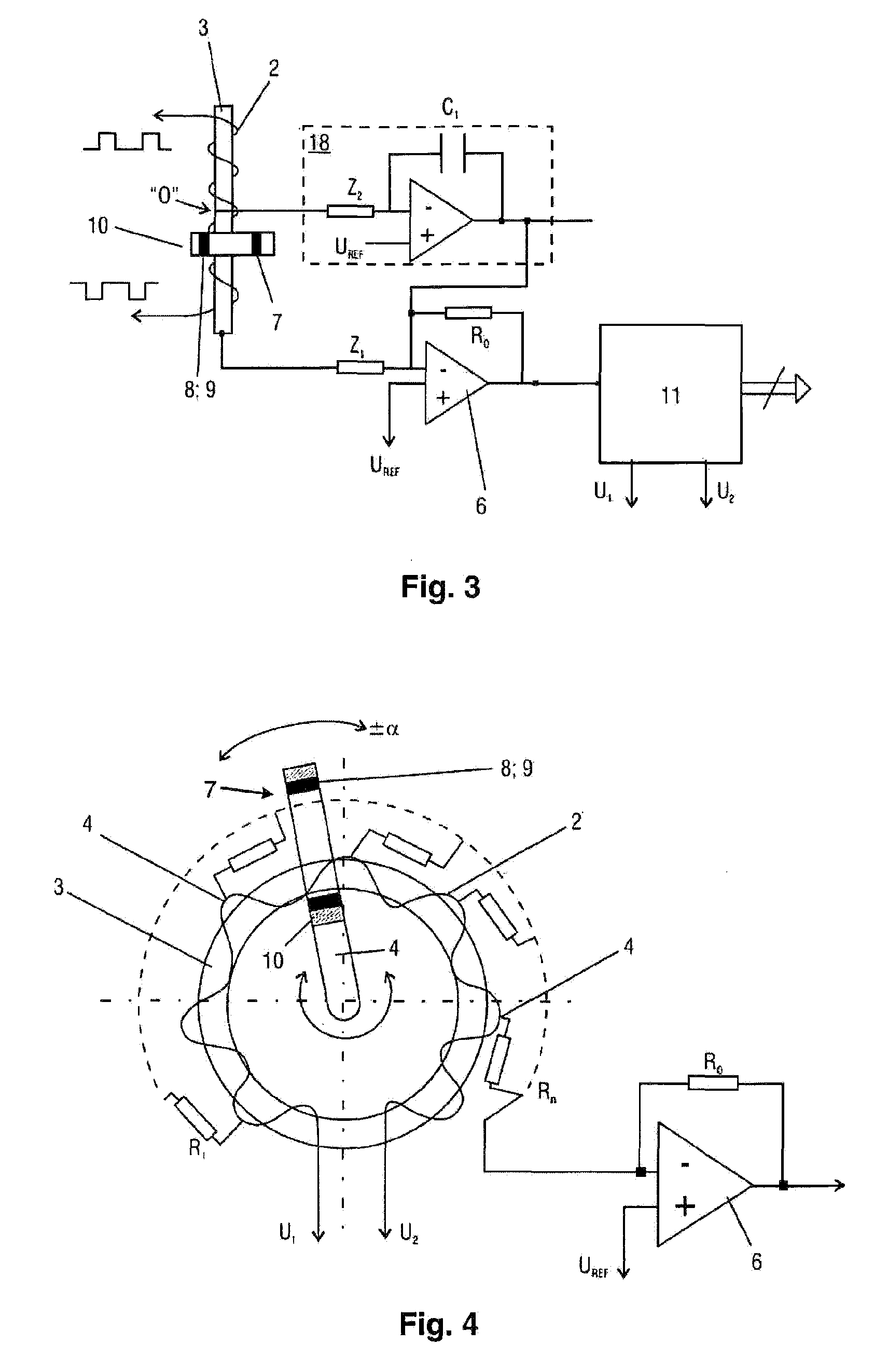Device and method for detecting the position and the velocity of a test object
a technology of test object and position, applied in the direction of devices using electric/magnetic means, instruments, stray field compensation, etc., can solve the problems of large dimensioning of the sensor, affecting the output signal in differentiating systems in general, and the strong restriction of the sensor structure, so as to achieve the optimal ratio of measuring area and maximum linearity of output signals. , the effect of saving spa
- Summary
- Abstract
- Description
- Claims
- Application Information
AI Technical Summary
Benefits of technology
Problems solved by technology
Method used
Image
Examples
Embodiment Construction
[0032] The present invention now will be described more fully hereinafter with reference to the accompanying drawings, in which some, but not all embodiments of the invention are shown. Indeed, the present invention may be embodied in many different forms and should not be construed as limited to the embodiments set forth herein; rather, these embodiments are provided so that this disclosure will satisfy applicable legal requirements. Like numbers refer to like elements throughout.
[0033] In a first exemplary embodiment of a device (FIG. 1) according to the present invention, a sensor 1 is provided which comprises a measuring coil 2 which is wound on a coil body 3 and has a number of taps 4. In the interior of the coil body 3, a test object 5 is displaced together with a target 7, which is electromagnetically coupled to the measuring coil 2, along the longitudinal axis of the measuring coil 2. The target 7 is composed of two parts, the first part facing the coil being produced in th...
PUM
 Login to View More
Login to View More Abstract
Description
Claims
Application Information
 Login to View More
Login to View More - R&D
- Intellectual Property
- Life Sciences
- Materials
- Tech Scout
- Unparalleled Data Quality
- Higher Quality Content
- 60% Fewer Hallucinations
Browse by: Latest US Patents, China's latest patents, Technical Efficacy Thesaurus, Application Domain, Technology Topic, Popular Technical Reports.
© 2025 PatSnap. All rights reserved.Legal|Privacy policy|Modern Slavery Act Transparency Statement|Sitemap|About US| Contact US: help@patsnap.com



